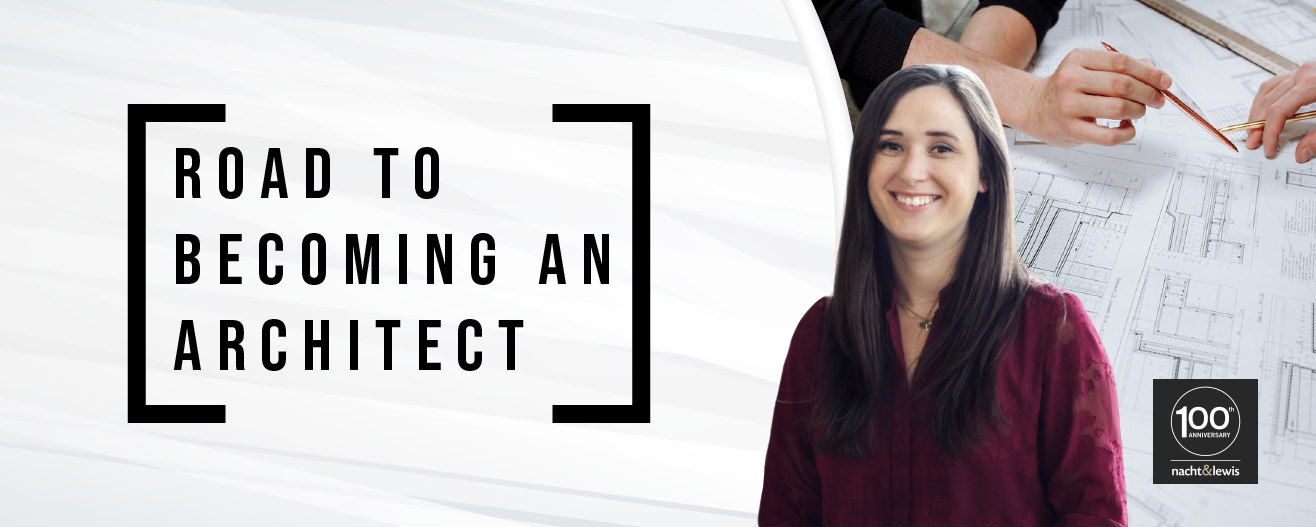Fall of 2007, I chose to go to University of Nebraska without a clear understanding of what I wanted to study. When enrolling into my first semester courses, I was afraid that I would never decide on a major and did not want to start with General Studies so I committed to the College of Architecture. Once I was in the program, I found a love for architecture and continued with my studies. Four years later, I was able to obtain my Bachelor of Science in Design and completed my Master of Architecture degree two years later
I got some experience working at an architecture firm while still in school, although I started getting real experience after college working at Stateline No. 7 Architects in Casper, Wyoming as an Intern Architect. I worked there for two years and began to track my hours for licensures even though I was not studying for my licensing test. By that time, I had been in school for six years and wanted a break from studying to focus on gaining experience in the industry.
In 2015, I joined Nacht & Lewis and started to log my hours more regularly with the National Council of Architectural Registration Boards (NCARB). NCARB is a national organization that facilitates licensing for the U.S. The board allows you to log in practice hours, track your progress and schedule exams. The log is separated by six categories: practice management, project management, programming and analysis, project planning and design, project development and documentation, and construction and evaluation. While tracking hours, the log must be approved by a licensed architect mentor. In total, an aspiring architect in California must complete a minimum of 3,740 hours.

Once I completed my hours, I began studying for the test using different methods. I read study books, took practice quizzes online and ultimately signed up for a study group with the American Institute of Architects, Central Valley (AIACV). We used Black Spectacles, a study program that provided informational videos, practice quizzes and exams. The group met once a week to review the Black Spectacles program and discuss what we had learned. At that time, we were able to discuss the material which helped me retain the information. Being in a study group not only helped me stay on task and held me accountable to meet weekly goals but I was able to get encouragement from others going through the same thing. When I was studying alone, I gave myself about one or two hours each day to understand the material. I also knew cramming until the last minute wasn’t going to help me, so I studied nearly every day. The study material wasn’t something you could memorize; it needed to be well understood to be successful on seven exams. I took my first exam in July 2018 and passed my last exam in October 2019. It was a whole year of tedious studying and testing, but I was officially licensed by November 2019!

In California, there are seven tests to obtain an architecture license. Six are the Architect Registration Exams (ARE) which are required in most states to obtain a license. The final test is the California Supplemental Exam (CSE) that focuses on California specific laws, agencies, and unique conditions to the state.
As a licensed architect in the State of California, you must complete continuing education hours every year. The AIA requires 18 general learning units and 12 hours in health, safety and welfare each year. Additionally, the California Architects Board requires five hours of training in accessibility design issues every two years. Being a member of the NCARB is another way of continuing education opportunities. It also makes it easier to obtain licensure in other states if that is a long-term goal.

My biggest recommendation is to keep going! If you take a long break from studying, it is much harder for you to pick back up again so once you get the motivation to start, just keep at it. You should log your hours regularly, study regularly, schedule the tests so you have a deadline and just get it done!
Honestly, one of the biggest perks of obtaining your license is being able to say, “I’m an architect!” It never gets old.




